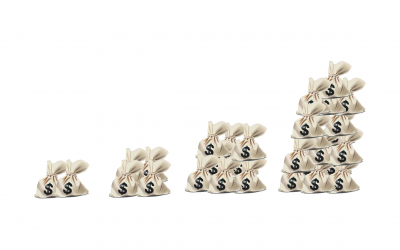Pivot points are technical analysis indicators traders use to establish support and resistance levels.
It comprises of seven levels. The pivot point (PP) level, three support levels(S1,S2,S3) below the Pivot Point(PP) level and three Resistance levels(R1,R2,R3) above pp.
These levels are calculated basing on the high, low, and close of the previous trading session.
Key Pivot Level (PP) – This is the middle and key pivot point on the chart.
Above PP, Resistance 1 (R1) – It is the first pivot level above the key pivot level.
The Resistance 2 (R2) – This is the second pivot level above the key pivot point, and the first above R1.
Resistance 3 (R3) – This is the third pivot level above the key pivot point, and the first above R2
Below PP, Support 1 (S1) – It is the first pivot level below the key pivot point.
The Support 2 (S2) – This is the second pivot level below the key pivot point and the first below S1.
Support 3 (S3) – This is the third pivot level below the key pivot, and the firs below S2.
Like the traditional support and resistance levels, prices tend to change direction every time it approaches these levels.
In the previous lessons, we looked at;
- The different types of pivot points
- How to use pivot points to generate trade signals
- How to set stop and target levels with pivots
- And how to determine market sentiment using pivot points.
We shall now take a small recap on what we previously looked at highlighting the major topics. Let’s on dig in.
What are the different types of pivot points
Classic or Standard Pivot Points;
This the key pivot points and the most common among traders. To calculate standard pivot points(PP), just get the high, low and close of the previous session and divide it by 3.
Pivot Point (PP) = (High + Low + Close) / 3
Once you get PP, calculate S1, S2, R1, and R2. You use the high, low and close of the previous trading day.
How to go about it;
PP = (High + Low + Close) / 3
S1 = (PP Value X 2) – Previous High
R1 = (PP Value X 2) – Previous Low.
S2 = Pivot Value – (High – Low)
R2 = Pivot Value + (High – Low)
The other types of pivot points are;
- Camarilla pivot points
- Woodie’s pivot points
- Fibonacci pivot points
How to use pivot points indicator to generate trade signals
Buy if the price is above the pivot point. And Sell if the price is below the pp
With the PP strategy, you should mainly look out for price breakouts or Reversals on the levels.
Note that;
The best way to trade pivot points is to treat them as normal support and resistance levels.
The breakout strategy is more viable in a trending markets than ranging markets.
On the other hand, the reversal strategy is more viable in a ranging market than a trending market.
The more times price tests these levels, the stronger they get. Therefore, for every set up you choose to trade, consider at least three price touches on the pivot level.
Preferably, trading pivot point strategy on a higher time frame is more reliable than on a smaller time frame.
Last but not least, it is very important to use an additional indicator for instance, candlestick patterns for an extra signal confirmation for your entry
How to use Pivot Points to determine Market sentiment
Did you know you can use Pivot points to determine the market sentiment! Yes you can.
Watching the pivot points you can judge whether It’s the buyers or sellers in control of the market.
Since price tends to reverse every time it approaches the pivot point line, at your watch, you can easily judge. You can see whether market sentiment is “bullish” or “bearish.” Or if the sentiment has shifted from bullish to bearish or the other way round.
Basing on this judgement, you can decide whether to buy or sell the currency pair
If the price breaks through the pivot point to the top, it indicates that traders are bullish on the pair and you should start to buy the pair.
Conversely, if the price breaks through the pivot point to the bottom, it signals bearish sentiment, then you should sell the pair.
When price breaks up, buy. When it breaks the support, sell.
You can also use these points to determine your stops and target levels for your trades.
Trading Pivot points is much easier if you treat them as the traditional support and resistance levels. At these levels, price can either reverse or breakthrough though most of the time, the prior happens.
It is always important to wait for a confirmation signal before you execute your trade otherwise you may fall for a fake signal.
Final word; Practice risk management habits to avoid large losses
Why you make small profits and take big losses?
Major Reason why You make Small profits and take Big Losses in Forex is because you have lost market objectivity. This is due the influence of greed, fear, regret and revenge. You trade what you are thinking instead of what you see! The problem is that traders want to...
- Oh, bother! No topics were found here.



